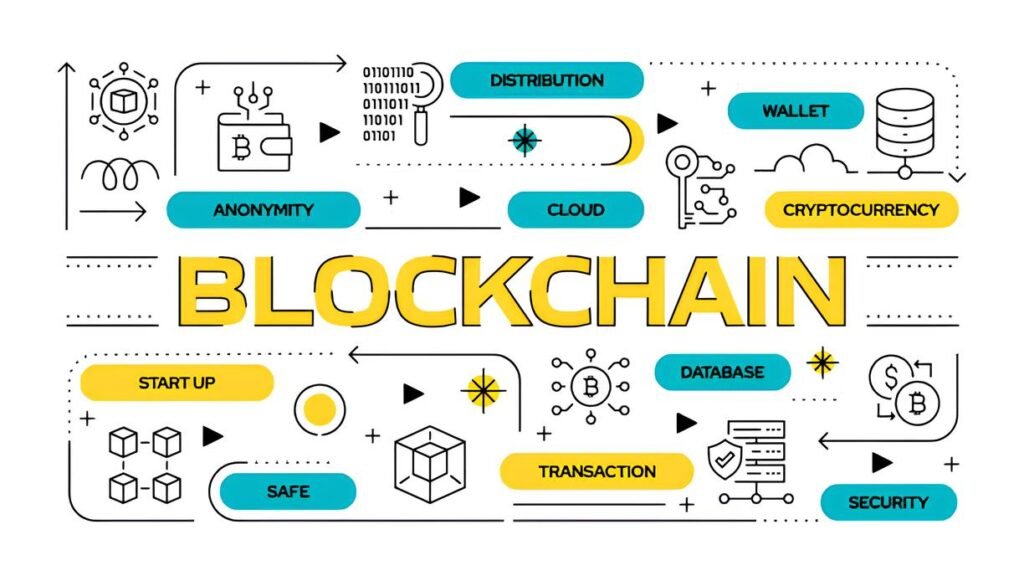Imagine setting up a brand-new crypto wallet, convinced that it offers complete anonymity. You’ve taken care to avoid linking it to your personal email, used different devices, and even shuffled IP addresses through a VPN. Yet, somewhere deep inside the blockchain, or behind the hood of decentralized ledgers, traces of your activity slip through—more revealing than you’d imagine.
In the thrilling world of cryptocurrencies, “anonymous wallets” often feel like digital cloaks, but the reality is more complex. What’s “anonymous” on the surface can leak subtle clues about your identity, network, and habits. These breadcrumbs, invisible to most users, can unravel your careful privacy efforts.
In This Article
The Myth of True Anonymity on the Blockchain
When Bitcoin first launched, many believed it was the key to perfect financial privacy. But blockchain technology is fundamentally transparent by design. Every transaction is recorded on a public ledger, permanently accessible to anyone who wants to dig through it.
This means your so-called anonymous crypto wallet isn’t a black box. Each transaction you make creates a public record that can be traced—from wallet address to wallet address. With increasing sophistication in blockchain forensics, these trails are becoming easier to follow.
Privacy coins like Monero and Zcash have emerged to address this, employing stealth addresses and ring signatures to obscure transaction details. However, even these solutions have caveats and weak spots that users need to understand before trusting them blindly.
Why Transparency Isn’t Just a Feature, It’s a Vulnerability
The blockchain’s open ledger is a double-edged sword. It fosters network integrity and trust, but also empowers data miners and law enforcement to map transaction flows and, potentially, the identities behind those flows.
Companies specializing in blockchain analytics leverage this transparency to cluster wallet addresses, link activity patterns, and even tie addresses to real-world identities through metadata correlations. This technique has caught criminals and unsuspecting users alike.
How Wallet Metadata Leaks Reveal Your Identity
When you create or use a crypto wallet, you leave behind more than just transaction hashes. Wallet software and networks generate metadata—information about how you interact with the blockchain and the world beyond.
Consider these subtle but telling leak sources:
- IP Address Exposure: Each time your wallet broadcasts a transaction, your network IP can be logged by nodes or relays.
- Timestamp Patterns: Regular transaction times help narrow down your timezone and daily habits.
- Device and OS Fingerprints: Wallet apps often reveal device data, software versions, or even hardware IDs.
- Transaction Graphs: Examining how coins move from address to address can expose linked wallets or exchanges you use.
Even seemingly innocuous details such as the order of your transactions or the size of transferred amounts can be pieced together to profile your activity, leading to the de-anonymization of your wallet.
Using “anonymous” crypto wallets without extra network anonymization can expose your IP address to blockchain nodes, potentially linking your identity to your wallet in real-time.
How Blockchain Metadata Analysis Works
Analytics firms and law enforcement don’t manually track every address. Instead, they utilize automated clustering algorithms to group addresses that likely belong to one user or entity.
Combining open-source intelligence (OSINT), exchange records, and network data, they gradually map the human behind those pseudonymous strings. The more you reuse addresses or connect with centralized platforms, the easier this process becomes.
Behavioral Patterns: You Are Your Own Fingerprint
Privacy isn’t just about technical barriers—it’s about habits.
Just like a hand-written signature or a unique walking gait, your transaction behaviors leave patterns. If your spending occurs at predictable times, or your transfers follow the same routes, you create a distinct behavioral profile.
For example, many users unknowingly reuse wallets for different purposes or always start transactions within the same rough hour. Monitoring these habits can allow observers to link transactions across “anonymous” wallets.
Even more revealing is the tendency to interact with a consistent set of services—exchanges, mixers, and marketplaces. Each point of interaction can leak identifying data.
Breaking your own patterns is key: varying transaction times, amounts, and routes can disrupt profiling techniques aiming to tie your activity to one fingerprint.
Metadata Isn’t Just Technical, It’s Psychological
This behavioral aspect ties closely to the psychology of anonymity. Because crypto transactions are permanent and immutable, small slips add up over time, assisting in building a composite profile.
Learning to think like an analyst—considering what your transaction habits reveal—makes a significant difference. Forgetting this often leads “anonymous” wallets back into the public eye without their owners realizing it.
Common Mistakes and Tools That Can Compromise Privacy
With privacy tools multiplying, it’s tempting to think installing a privacy wallet app is all you need. But reality bites hard.
- Using Web-Based or Hot Wallets: These often connect directly to the internet, exposing your IP and device data each time they sync.
- Failing to Use Mixers or Tumblers: Sending funds directly between wallets without obfuscation ties transactions together.
- Reusing Addresses: Each reuse links your activities, undermining one of the simplest privacy protections.
- Ignoring Device Privacy: Your smartphone or computer may leak telemetry data, GPS info, or even identifiers through software.
- Syncing Wallets Across Devices or Clouds: Synchronization may leak metadata or cause unintentional exposure if any endpoint is compromised.
For those eager to dive deeper into blockchain tracking risks, tools like what blockchain metadata can reveal about you offer thorough insights into how forensic experts analyze your transaction history.
Beware the UX Pitfalls of Privacy Wallets
Many wallets claim to be privacy-focused but rely heavily on user discipline. For example, failing to understand recovery seed security, or poorly managing multisig setups, can open backdoors to surveillance.
Syncing wallets or backups on cloud services without proper encryption can leak cryptographic keys or transaction logs to third parties.
Best Practices to Harden Your Crypto Privacy
While no setup guarantees 100% anonymity, layering defenses reduces risks significantly.
- Use Cold Storage Wallets: Keep funds in offline wallets that only connect when necessary, minimizing exposure.
- Leverage Privacy Coins: Coins like Monero offer stronger on-chain privacy features, ideal for sensitive transactions.
- Employ Crypto Mixers Mindfully: Mixers or tumblers break transaction trails but choose reputable ones to avoid scams.
- Adopt Dedicated Network Anonymity Tools: Combine wallets with trusted VPNs or Tor networks to hide your IP—learn more from the best VPNs for Tor in 2025.
- Rotate Wallets and Addresses: Frequently switch wallet addresses to prevent linkage across transactions or services.
- Separate Identities and Devices: Use different machines or virtual machines for crypto activities, and don’t mix personal and anonymous operations.
- Regularly Audit Your Privacy Setup: Check for leaks, update software, and reassess behaviors that may expose your identity.
Prioritize operational security (OPSEC). Even the best wallet won’t protect you if your daily habits and online presence give away clues.
Frequently Asked Questions
Q: Is it possible to stay truly anonymous with any crypto wallet?
A: Absolute anonymity is extremely difficult. Combining privacy-focused coins, network anonymization, and strict OPSEC is your best approach, but be aware of inherent limitations.
Q: Should I always use hardware wallets to protect my privacy?
A: Hardware wallets secure keys offline, reducing exposure risk. They don’t guarantee anonymity alone, but are essential for protecting against device-level compromise.
Q: Can mixing services fully hide my transaction history?
A: Mixers increase privacy by mixing coins from multiple users, but not all are trustworthy or immune to blockchain analytics. Use reputable services and mix multiple times for better results.
Q: How do VPNs or Tor improve wallet anonymity?
A: They conceal your IP address when broadcasting transactions. Without them, observers can tie wallet activity to your network location. For more details, see our coverage on the best VPNs for Tor in 2025.
Q: What’s the biggest mistake people make with anonymous wallets?
A: Overestimating technology’s protection while neglecting behavioral patterns, device privacy, and address management is the most common pitfall leading to exposure.


